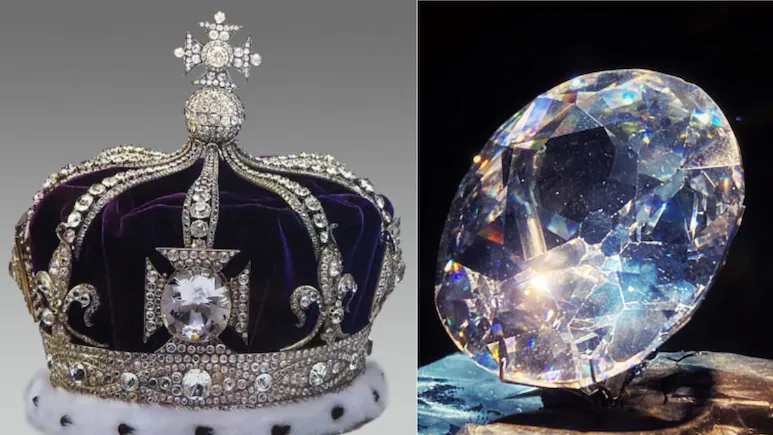India’s Lost Diamond – The True Story of Kohinoor, Egg-Sized Diamond

The Kohinoor diamond, one of the world’s most famous gemstones, carries a legacy of conquest, royalty, and enduring disputes. Believed to have been mined in India’s Golconda region during the Kakatiya dynasty (12th–14th century), this 105.6-carat diamond has passed through the hands of Mughal emperors, Persian invaders, Afghan rulers, and finally, the British monarchy. Today, it sits in the Tower of London as part of the British Crown Jewels, yet its ownership remains a contentious issue between India, Pakistan, Iran, and Afghanistan.
A Symbol of Power and Plunder
Originally named “Syamantaka Mani” in Indian texts, the Kohinoor (meaning “Mountain of Light” in Persian) first gained prominence under the Mughals. It adorned Shah Jahan’s Peacock Throne before being seized by Persian ruler Nader Shah in 1739. After changing hands among Afghan dynasties, it returned to India under Maharaja Ranjit Singh of Punjab. Following his death, the British East India Company acquired it through the Treaty of Lahore (1849) and presented it to Queen Victoria in 1850.
The Myth of Its Immense Value
A popular but exaggerated claim suggests the Kohinoor’s value could “feed the world for two and a half days.” While its historical and cultural worth is immeasurable, experts estimate its current market value at $200–400 million. However, its true significance lies in its symbolism—of colonial exploitation for some and royal heritage for others.
The Ongoing Ownership Debate
India has long demanded the diamond’s return, citing its forced surrender during British rule. The UK maintains it was obtained legally, and British law prohibits the Crown Jewels’ repatriation. Meanwhile, Pakistan, Iran, and Afghanistan also stake claims based on their historical ties.
The Kohinoor’s journey mirrors centuries of shifting power. While its monetary value is debated, its emotional and historical weight ensures it remains a jewel the world can’t stop talking about. Whether it will ever return to its homeland remains an open question—one that keeps its legend alive.







